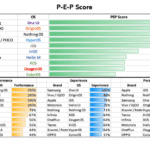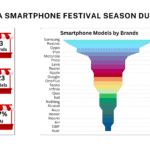Tablet PC with all its glamour and the convenience tag, has been one of the stagnant markets that has still not been able to ‘explode’ to its potential. In the Indian market where it hardly takes any product category around 5 years to cross 10 million milestone, Tablets are hardly half the way in a calendar year.
The issue in this product category has been that for majority of the target group, tablet PC means iPad. For the other target segments that could have been created through affordable options using Android, I think it has been a mix of many reasons that it never saw the growth it could have.


First and foremost were the very poor specifications of Tablet PCs. Against the exponential growth smartphones witnessed in terms of becoming powerhouses, at times even comparable with supercomputers of yesteryears, Tablet PC was somehow poorly designed when it came to specifications. It seemed that the OEMs making Tablet PC were looking at them as just another e-reader and weren’t expecting users to consume rich multimedia and immersive content.
The second reason was the size differential. Smartphones almost became synonymous to phablets that too having 6.5 inch or bigger display size. Even Apple, in someway conceded to the market preferences and gave up its single hand operations positioning of smartphones and decided to go for bigger iPhones after the launch of iPhone 6. Tablets on the other side stagnated at 7-inch and few of them at 8-inch display size. So, the incremental value of owning a Tablet to get a bigger screen experience wasn’t worth.
The third reason was that many users wanted Tablets also to be used for content creation. However, the keyboard attachment of most of the brands who introduced it was not up to mark. Not just ergonomically but the quality of the keypad was far inferior. Its keys would detach very soon, and it was nowhere close to the experience of a laptop or PC keyboard.
Fourth reason was perhaps the OEMs were confused with the orientation of Tablet PCs. Was it a consumer or enterprise product? This was somehow not getting answered. OEMs would make Tablet PCs for consumers, yet their bulk of sales would take place through enterprise deals, especially government. There have been some of the deals in the past that not just changed the market standings but also expanded the otherwise shrinking Tablet market.
Finally, with the advent of 4G, the content consumption pattern changed. It was all about rich multimedia content than just browsing through textual content reading journals and books. Any smart device was supposed to offer immersive experience and let users enjoy the rich multimedia content in the best possible manner. Tablets were failing in this as well.
In the Android ecosystem, barring Samsung no other OEM really attempted to make some powerful Tablets, which could meet the expectations of the changing consumers. The consumers would find a big gap between what they were able to do on a smartphone versus what their Tablet was capable of. There was no extension in the experience if one would switch from a smartphone to a Tablet. Compared to this, smart TVs graduated quickly and started offering very rich experiences to the consumers and today in just 5 years of real smart TV journey, we find some of them offering even better experience than a smartphone, not just from the bigger screen point of view.
Last year Xiaomi also did an attempt to introduce a Tablet PC that was positioned to redefine the experience in the product category. Having experienced the device, it was definitely far better than the Android Tablets available in the market. However, in some areas I did find issues with the Tablet. For instance, its keyboard quality was not up to the mark. The stylus was again of an average quality. We also saw Realme, OPPO, Nokia as the new OEMs in the Tablet PC space where we would predominantly see Lenovo and Samsung as the Android players. In old days there used to be several other brands including iBall, Micromax, Milagrow to name a few.
I have been using OnePlus Pad for some weeks now. Initially used it as my only device for a few weeks where I attempted to use it for all my official and personal use cases. I will be writing soon a detailed review of my experiences with it, with regards to different applications. But overall, the experience of the device has been phenomenal. I wouldn’t compare it with iPad as that is for a different segment. But, if someone wants to explore a good Tablet within Android, then OnePlus Pad is a good substitute that may offer at times iPad equivalent experience.
The device is very smooth to operate and gives an immersive rich content experience adding to the delight. Each and every detail has been well designed and thought out. OnePlus has also given due attention to this signature ‘premium’ look and finish. There is no compromise with the quality of the materials used in the Pad. The stylus is one of the best in the industry and can be placed next to Apple Pencil.
OnePlus Pad addresses all the above cited concerns that have hindered the growth of Tablet PC as a category of smart products. If the ecosystem responds to the standards set by OnePlus and we get to see more options of similar products, I see no reason why more people won’t buy Tablets. This will not only help OnePlus to earn a leadership position, but also will allow the Tablet PC market to expand and chart a journey towards its potential in a market like India. With OnePlus Pad, I would say, OnePlus has raised the bar and set a benchmark for others to replicate.






One response to “If more Tablets like OnePlus Pad hit the market the product category will grow to its potential”
[…] Mi Pad 6 takes the fight to the recently launched OnePlus Pad, which was launched recently at a slightly premium price tag of Rs. 37,999. We have been testing […]